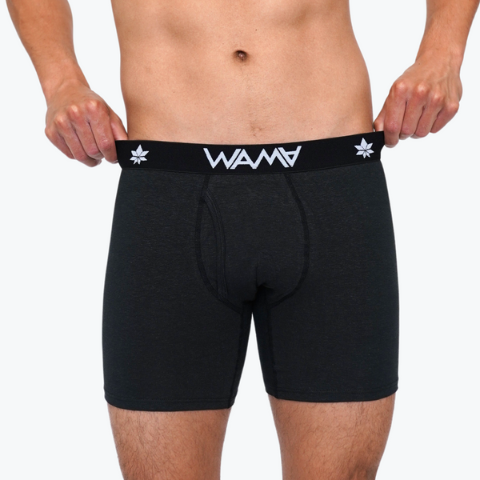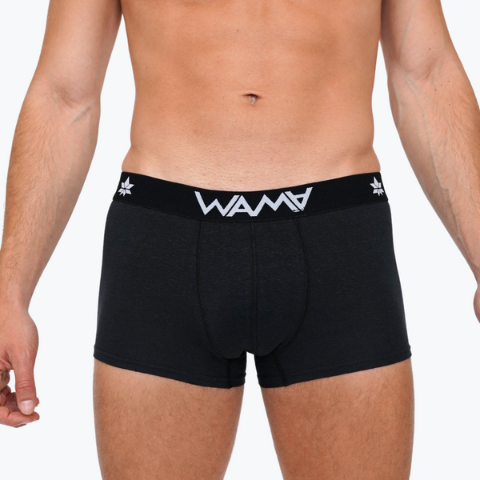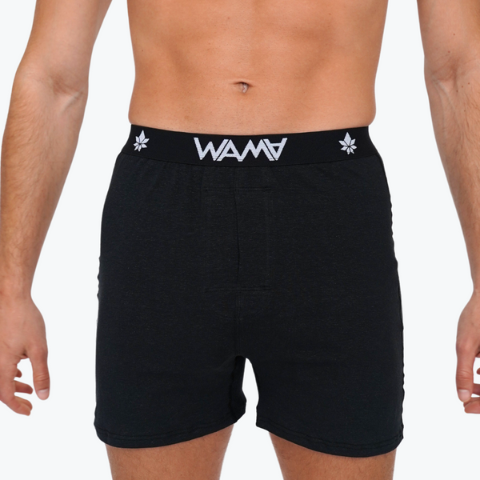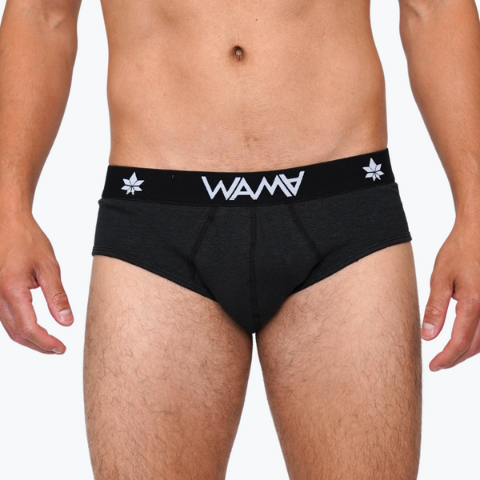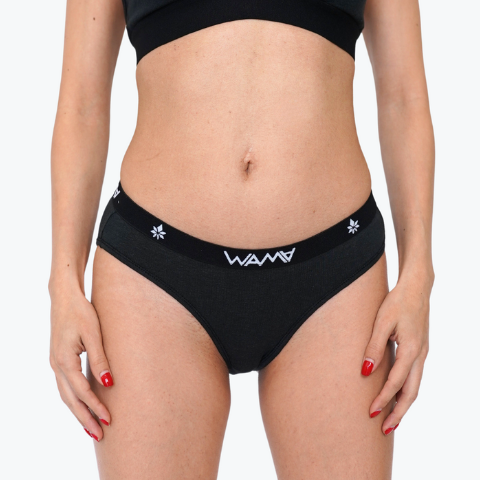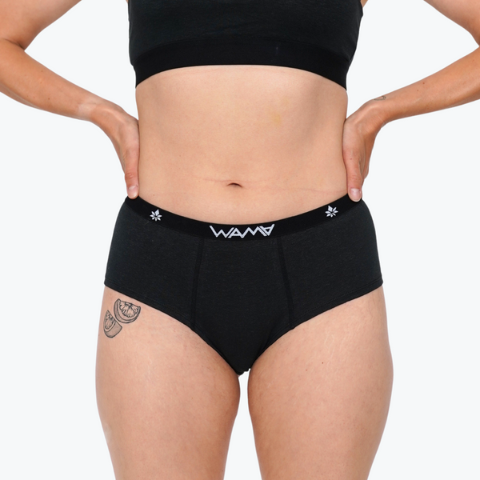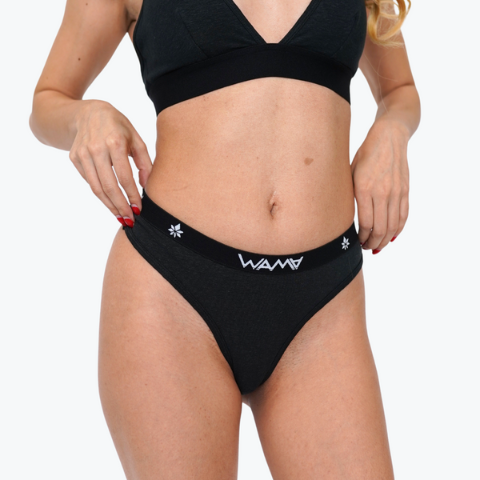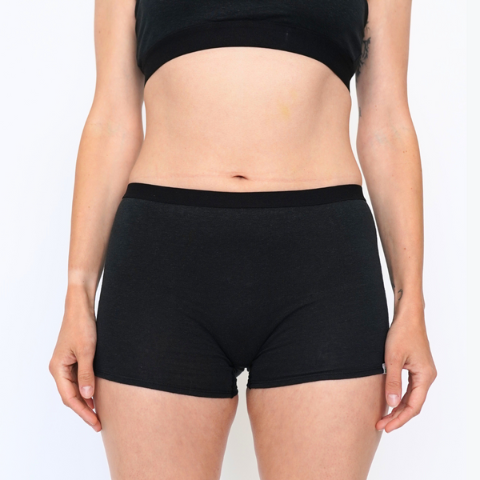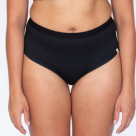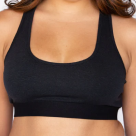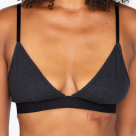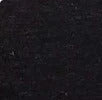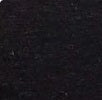Fabric testing is so incredibly important in ensuring that consumers can trust the quality of the clothes they buy and wear. Hemp clothing brands like WAMA know just how important it is to rigorously test fabrics so that the final product is comfortable, durable, and made to the highest standard.
So what exactly is fabric testing, and what kinds of textile tests does WAMA use? Read to learn all about the journey hemp fabric goes through before becoming your next pair of high waisted underwear or hemp bra!
WHAT IS FABRIC TESTING?
Fabric testing is an inspection process designed to evaluate the quality and composition of a textile. There are many different ways to test a fabric, and each test is designed to assess different factors of a high quality fabric. Some of the most popular forms of textile tests include:
- Fiber content
- Bursting strength
- Color fastness
- Shrinkage rate
- GSM (grams per square meter aka thickness)
WHY IS FABRIC TESTING IMPORTANT?
1. FABRIC TESTING PREVENTS MISLABELED FABRICS.
Without properly testing a fabric, you can’t be sure that you’re getting the textile you think you are. In fact, over 80% of retail products on the market today have improperly labeled fiber content. When WAMA founder Shakib Nassiri first started the brand, he ordered 200 pairs of hemp underwear to be made. He had it independently tested, and was shocked to find out that the first batch of “hemp” underwear was actually made with linen!
When it comes to hemp vs linen, these two fabrics can often be nearly identical in texture and feel, but in fact linen just doesn't compare to the eco-friendliness of hemp. If WAMA hadn’t tested the fabric, we would’ve never known that those 200 pairs of underwear were actually linen. While this debacle delayed WAMA’s launch for a full year, we knew we had to deliver the best possible product—and that wasn’t going to be linen underwear mislabelled as hemp.
2. TEXTILE TESTING KEEPS CORNERS FROM BEING CUT.
Unfortunately, mislabeling fabrics isn’t the only way that suppliers and other players in the fabric manufacturing chain will sometimes try to cut corners. Especially with how global the fashion industry is today, it’s important to always independently test fabric to make sure that the highest quality standards are being upheld, and the fabric is built to last.
Hemp fabric, especially made from hemp in China, is one such fabric that many suppliers try to cut production costs. Often, suppliers will:
- Approve fabrics that aren’t high enough quality, in that they contain small tears or weak fibers.
- Not adhere to the correct fabric blend, by upping the percentage of filler fibers and lowering the percentage of quality fibers like hemp.
- Not test fabrics in the first place, resulting in low quality control and a wider range in final product quality.
Hemp is super sustainable compared to other fabrics, and making quality hemp fabric can be expensive. While cutting corners helps suppliers save money, it cheats consumers out of the high quality products they’re expecting to receive.
3. FABRIC TESTING IS GOOD FOR THE ENVIRONMENT.
It’s better for the environment when faulty fabrics are found early on in the manufacturing process, as clothing manufacturers can ensure that only the highest quality fabric is made into final products. Over time, this cuts down on carbon emissions, energy usage, and money spent by weeding out low quality textiles before they’re made into clothing and other goods.
Not to mention, the higher quality a fabric is, the longer it’s going to last as an item of clothing. After all, the average American throws away a whopping 81 pounds of clothing every year. When you buy clothes made with tested and vetted fabric, you’re ensuring that the fabric is strong enough for regular wear, there aren’t any holes or other issues with the fabric, and therefore you can get a lot more wear out of the clothes you’ve bought.
WHAT TEXTILE TESTING DOES WAMA DO?
All WAMA fabric undergoes an extensive textile testing process. First, hemp fibers are spun into fabric in a factory in China, then inspected for quality control using a 7-step physical inspection. Then, fabric is sent to an independent lab and tested for 3 different standards. Only after passing quality control and independent testing will fabric be sent to the garment factory to be made into WAMA underwear.
THE 7 STEPS OF PHYSICAL INSPECTION
Once fabrics are ready, we hire AQF to visit our fabric supplier to physically execute on-site quality control of the material. Based on the testing, they send us a full quality control report. Once the fabric passes the physical QC inspection, they will cut a few pieces of the fabric to send to SGS for lab testing. All fabric samples must be inspected for the following qualities:
- Workmanship: 4 point grading system to check the fabric for defects.
- Color match: to ensure the fabric matches it’s intended Pantone color.
- Thickness, width: to certify the fabric is the correct thickness.
- GSM: to test the fabric’s weight, an 11cm round piece of fabric is cut and weighed.
- Color fastness: the fabric undergoes dry and wet crocking and washing to make sure color doesn’t fade or transfer.
- Strength: strength is generally checked during physical inspection, but also tested for more precise data later at the lab.
- Shrinkage: this step is actually done at the garment factory, after lab testing.
THE 3 STANDARDS OF LAB TESTING
Once fabric passes physical inspection, it’s time for more textile testing at the lab. We use SGS Testing, one of the most trusted independent labs for inspection and verification worldwide. Because they’re entirely independent from WAMA, you can trust that the results are as accurate as possible. The following three standards are checked to ensure only the highest quality hemp fabric gets made into WAMA underwear.
1. FIBER CONTENT TEST
The required fabric composition for WAMA hemp underwear is 53% Hemp / 44% Organic Cotton / 3% Spandex. When testing for fiber content, we accept only ±3% variation in this blend. Testing for fiber content can take up to 30 days and delays the production process, but it’s a step we never skip. By testing fabric composition, we can ensure customers get the highest quality hemp underwear possible.
For Full Transparency - Download Full Report Here.
2. COLOR FASTNESS TESTS
Testing for color fastness ensures that the low impact dyes or natural color of your WAMA underwear won’t fade away from you wearing, washing, or sweating in them. Color fastness is tested by the lab in three ways:
- Color fastness to crocking checks for transfer of color by rubbing one fabric against another.
- Color fastness to perspiration checks for transfer of color by sweat and bodily moisture over time.
- Color fastness to washing checks for transfer of color by washing and drying fabric as you would between wears.
For Full Transparency - Download Full Report Here.
3. STRENGTH TESTS
This is the newest form of fabric testing we’re doing here at WAMA to ensure your hemp underwear is built to last through even the most rugged days and wildest adventures. For strength testing, all WAMA underwear is tested for tensile strength, tear strength, and bursting strength.
- Tensile Strength: a tensile testing machine applies force to a fabric sample until the sample breaks. The force required to break the sample gives us an idea of how much stress the fabric can handle.
- Tear Strength: a tensile testing machine applies force to a fabric sample with a tear already present, and the force required to tear the fabric further shows us how much stress the fabric can withstand once already torn.
- Bursting Strength: a fabric sample is bolted between grooved plates with a hole in the middle, then a steel ball is swung from a pendulum directly into the fabric until it bursts to show us a fabric’s strength against sudden stress and force.
For Full Transparency - Download Full Report Here.
FURTHER TEXTILE TESTING FOR WAMA HEMP UNDERWEAR
While all WAMA fabric is extensively tested using the steps above, there are even more tests that we do on our products to make sure you get the very best pair of thong underwear or triangle bralette possible.
That’s because hemp is a particularly special fabric, with all sorts of unique benefits that you won’t find in many other fabrics. And here at WAMA, we like to certify through independent lab results that you’re actually getting those unique benefits when you wear our products.
For one, hemp is perfect for naturally antibacterial underwear. It fights off mold and mildew, and we’ve got the test results to prove it. On top of that, hemp is one of the best options for upf fabric—without chemicals or additives, hemp blocks out harmful UV rays and protects your skin from the sun. And with our independent lab results, we feel good knowing you’re getting the very best hemp fabric available to protect your privates naturally.
FABRIC TESTING: CONCLUSION
Textile tests help clothing companies know that the goods they sell will be durable, comfortable, and made to the highest standard. Much of the fast fashion industry prefers to cut corners: using low quality fabric, not properly testing textiles, and producing clothes that are designed to fall apart quickly so you have to keep going back for more.
When you buy clothes that have been exhaustively tested throughout the manufacturing process, you can feel good knowing your clothes were constructed to the highest quality. Always look for brands that use third party testing to know that the sustainable fabrics you’re investing in are going to make it for the long haul.
Did you know the role fabric testing plays in sustainable fashion? Do you think you’ll consider textile testing when shopping for clothes in the future? Let’s chat about it in the comments!
